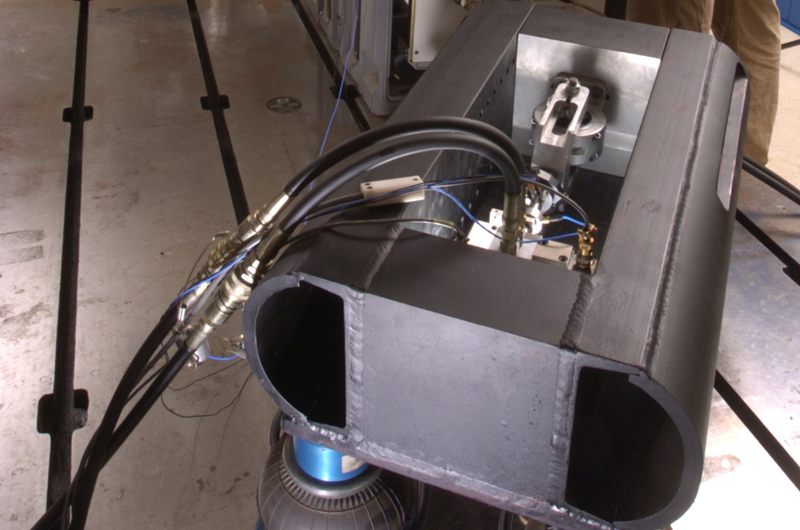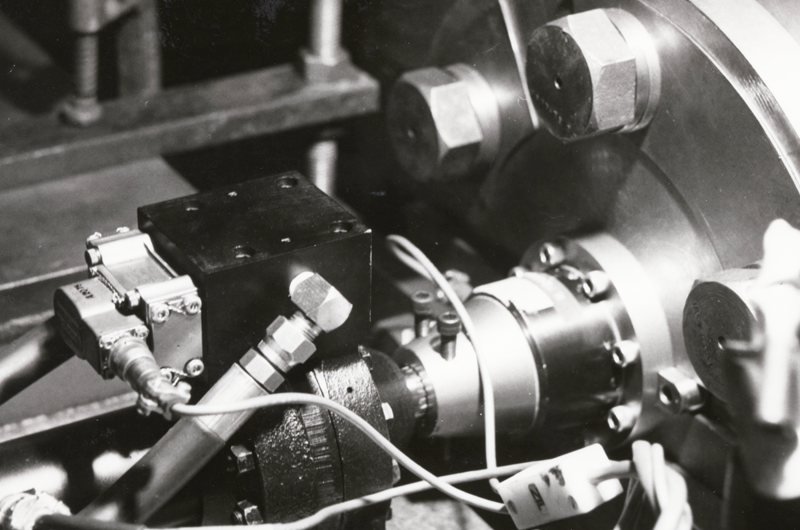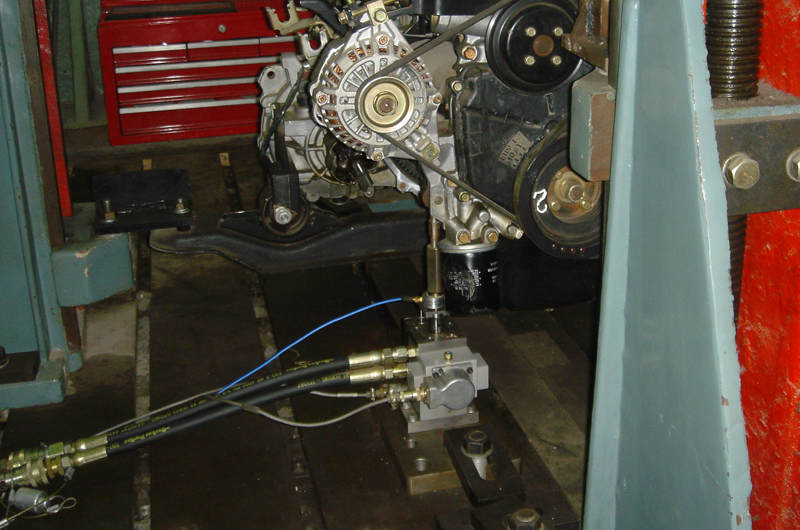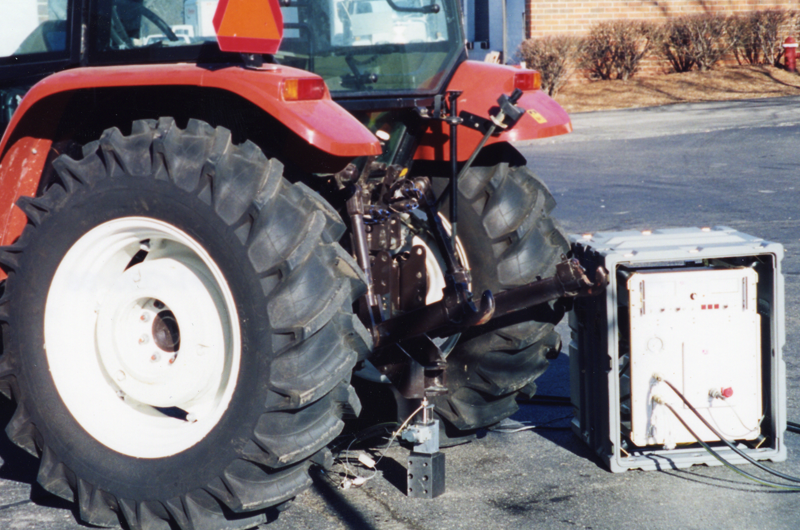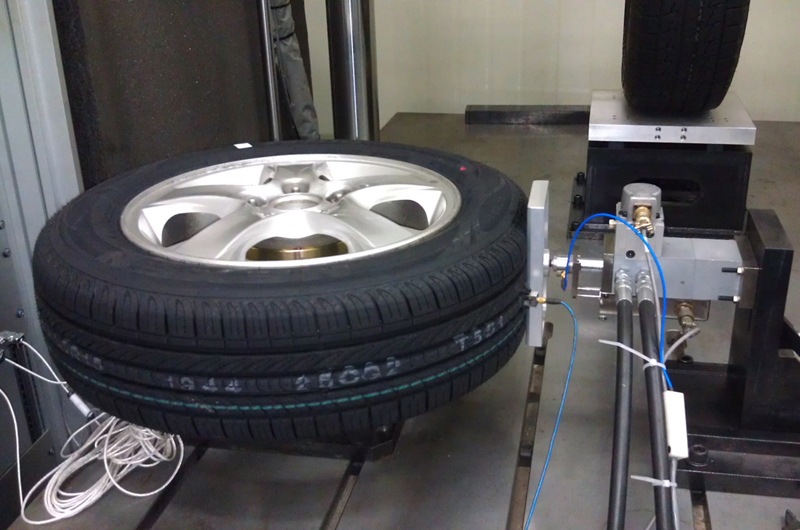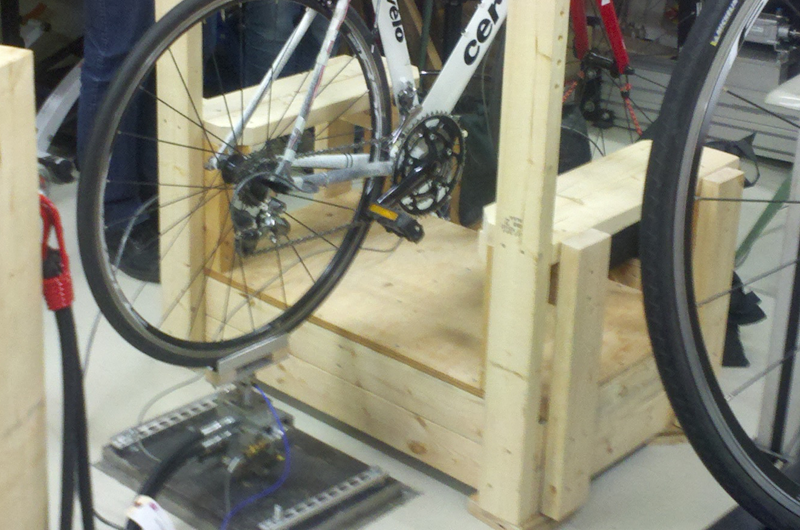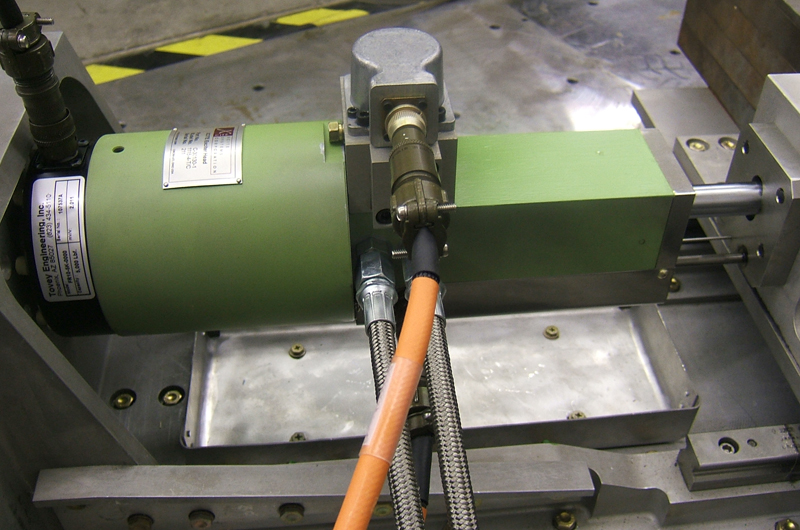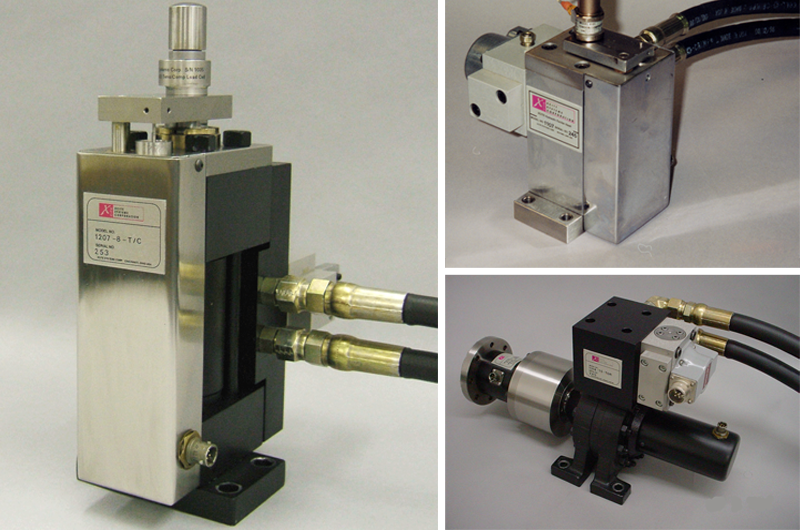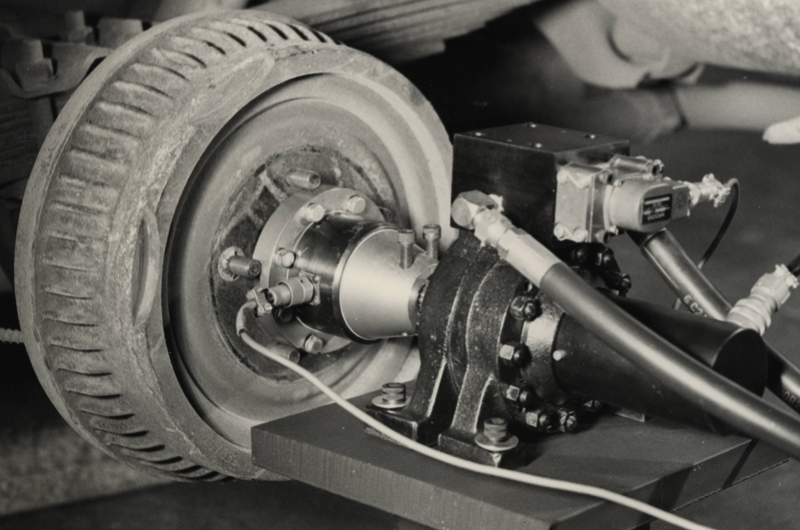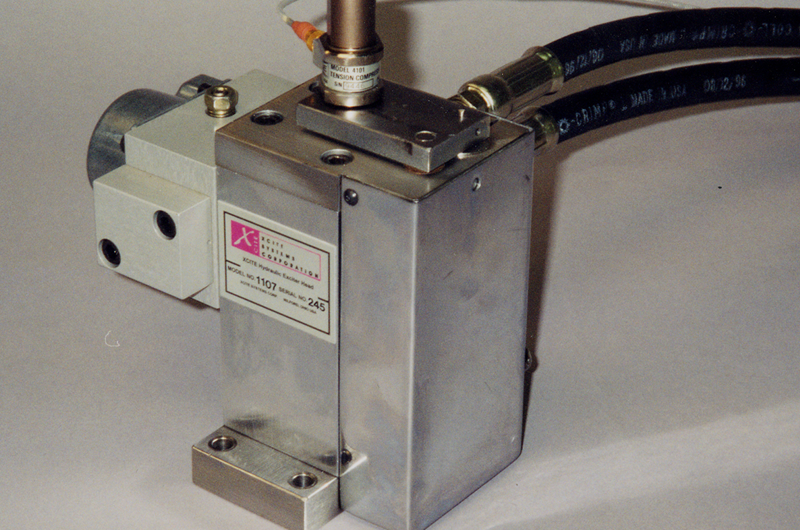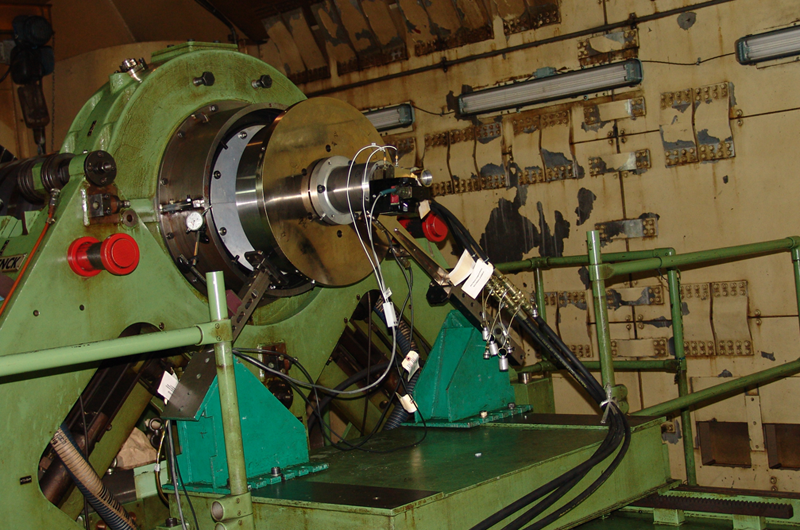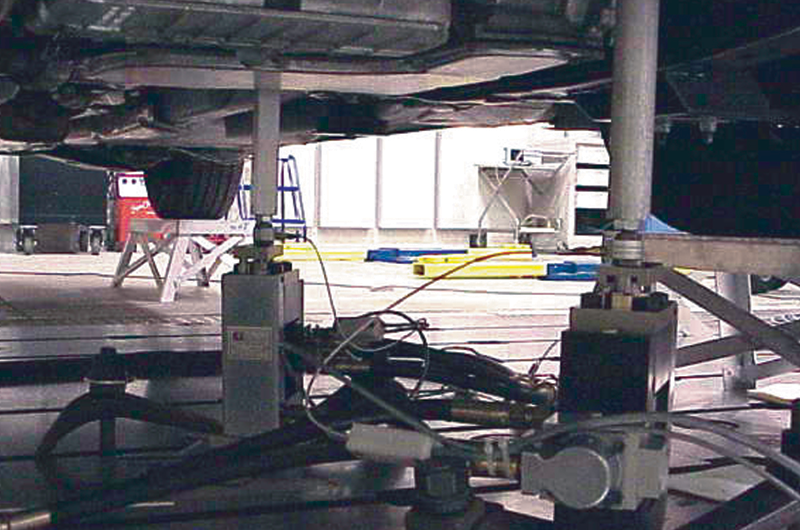Advantages of Hydraulic Excitation for Measuring
the Frequency Response of Structures
The FFT analyzer has rapidly gained popularity for making frequency response measurements on mechanical systems. One reason for this popularity is the ability of these analyzers to quickly and easily measure frequency response functions using impulsive excitation generated by an impact hammer. For lightly damped, linear structures, this low energy excitation technique provides good results, which accurately predict the dynamic behavior of the structure under higher level inputs.
However, many real-life structures exhibit a considerable degree of non-linearity and/or high damping. For example, bolted or riveted joints produce frictional damping and “gap” discontinuances; elastomeric isolation mounts are often highly nonlinear. In such cases, the frequency response function can change dramatically depending on the amplitude of the input, and so a useful measurement requires higher energy excitation techniques which approximate the dynamic levels actually observed in the operating environment.
These techniques involve the use of an exciter which is able to reproduce a desired force waveform, usually either random or sinusoidal nature.
A properly designed hydraulic exciter system provides an excellent general purpose tool for high energy structural excitation. Some of the key features which may be important for a successful frequency response are:
High Force Capability
Hydraulic exciters are available with peak force ratings from 1,000 lbs. to 20,000 lbs. or more. High force is essential for testing smaller structures which are highly damped, and for testing non-linear structures at a variety of input levels. It allows the use of broadband random excitation for faster results than would be possible using swept-sine testing with a lower force exciter.
Independent Static & Dynamic Control
This feature allows independent control of separate static and dynamic feedback variables. For example, in testing compliant or freely – suspended structures, it is often necessary to control the dynamic input force while maintaining static displacement control. This helps to keep the exciter from drifting to the end of its stroke.
Variety of Exciter Models
In addition to the full range of linear and torsional exciters, inertial mass exciters are available in linear and torsional models for applications in which backup fixturing is difficult, such as exciting buildings, turbine rotors, automotive drivelines, or shipborne structures.
Xcite Torsional Modal Excitation System
The Xcite Torsional Modal Excitation System allows the structural dynamist to apply pure moments in structures for the evaluation of torsional modal participation without the addition of side loads. (A problem which always accompanies the use of linear exciters and moment arms.) These torsional systems have been used in the development of diesel engine torsional dampers, anti-lock braking systems, automotive axles, half axles and turbine rotors.
Xcite 1100 Series of Modal Exciters
The Xcite 1100 Series of Modal Exciters have found applications in component testing in addition to total vehicle or structure excitation. As shown in the photo, the Xcite 1100 is being used on a bench to simulate the wheel/ road induced forcing functions into a prototype electric steering assembly to simulate noise and vibration levels acquired on the test track. By allowing a bench simulation, the exciter system allows the engineers to evaluate fixes at a fraction of the time and cost of repetitive test track runs.
1200-9 Continuous Rotation Torsional Excitation System
The 1200-9 Continuous Rotation Torsional Excitation System allows engineers to torsionally excite structures while they are rotating at speeds up to 4000 RPM. This unique torsional inertial mass excitation technique allows the test engineer to accurately measure torsional and bending mode frequencies of steam turbine rotors and blades while under the centrifugal loading of 3000 and 3600 RPM normal operation. The frequency range of 20 Hz to 300 Hz of stepped sine or random excitation is completely independent of operating speed.
Compact Size and Versatility
The compact size and versatility of control options when using the Xcite 1200 Modal Excitation System allows NVH engineers to simulate the operational static torque loading on engine mounts. Simultaneously, the engineers apply road acquired or synthesized dynamic loading profiles to evaluate the vibration isolation of various mounting configurations without needing to move the vehicle to a road simulator. This application shows two Xcite systems holding opposing engine mounts under tension and compression loading while dynamically driving the engine mounts with opposing phase signals generated by an LMS system.

